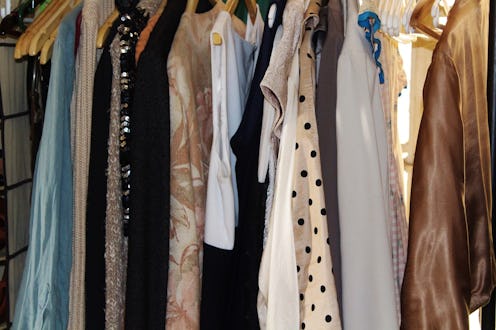Fashion
Is This The 2nd Biggest Pollutant In The World?

According to one study, the clothing industry is the world's second biggest pollutant after oil manufacturing, and the image of smokestacks, oil spills, and garbage that that connotes is not chic at all. The beautifully curated clothing, Pinterest-worthy decor, and perfectly dressed staff at your favorite boutiques make them seem the farthest thing from "dirty," but if this study is to be believed, it seems like that couldn't be further from the truth.
According to Alternet, one unlikely reason why clothing is such a drain on water and a source of pollution is because of cotton, the fiber found in about 40% of garments. Not only does this super-thirsty fiber need a lot of water to grow, but even though it only takes up less than 3% of the world's cropland, cotton plants are the recipient of a disproportionate 10% of the agricultural chemicals and 25% of the insecticides used in farming across the globe.
Custom Camisas, a sustainable clothing manufacturer based in Boston, claims it can take 25 liters of water to make a single t-shirt, a number that when factored out over the course of two years is enough to drain the Mediterranean Sea. Yikes!
If that's not bad enough, chemical dying and global shipping (read: sending cheaply-made garments from countries like India, China and Bangladesh thousands of miles away by boat, plane, and truck) also totally exacerbates the pollution caused by just a single season's worth of clothing.
Another problem is the world's (particularly, dare I say, the Western world's) preference for popping tags. We practically invented the notion of fast fashion and disposable attire, didn't we?
One solid way to alleviate a big part of the pollution caused by constantly churning out new clothing is to shop second-hand instead of only buying the new season's clothes. While I personally have no problemo buying (gently) pre-loved clothing, many of my friends turn their noses up at the notion.
The general sentiment is "I just want to know where my clothes have been." The fact is, though, that we don't know where they've been and we never will know, not unless our items come with a tracking device or hidden camera.
Plus, buying secondhand clothes is now easier than ever, thanks to a bevy of apps and websites that do away with the clutter and the oddly universal smell of brick and mortar thrift shops, instead letting shoppers peruse well-designed interfaces and easy ways to browse by category, size, brand, and color. Better yet? Most of these sites are peer-to-peer, meaning you're buying directly from the clothing's owner, putting some money back into their pockets and not off into the accounts of some giant corporation. And I don't even need to tell you that buying secondhand is also a lot less expensive, to boot. What's not to love?
So grab your credit cards, here are three top destinations for snagging stylish threads that you can feel good about:
Poshmark
Besides the killer selection, Poshmark is all about community. It's a place where people come to shop and snag items for a fraction of the price — in fact, all listings include the original price next to the current asking price, showing you the percentage you'd be saving — but it's also a networking site, as well. The most successful sellers are the ones who also share listings from other sellers, leave friendly comments, and aren't shy with the "Like" button.
The Real Real
In terms of experience, it's just like shopping on the website of a high-end department store, and the team of luxury experts behind it are more than adept at sourcing, verifying, even styling the best of the best in designer clothing, shoes, and accessories.
Thred Up
This super-fun online consignor is like The Real Real's equally stylish younger sis. Plus, there's a huge selection for kids as well - hello, back to school shopping!
Images: Counselling/Pixabay, Screenshots, Giphy